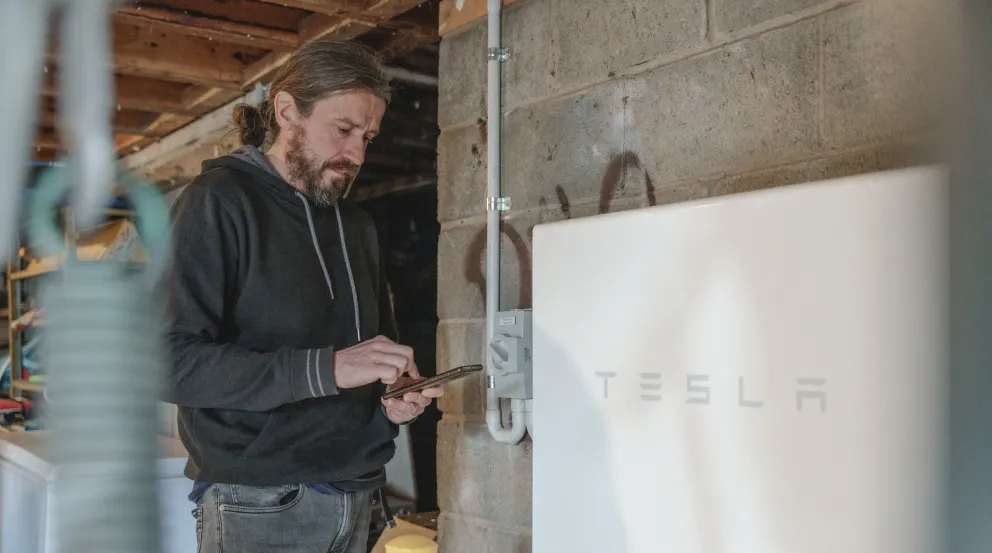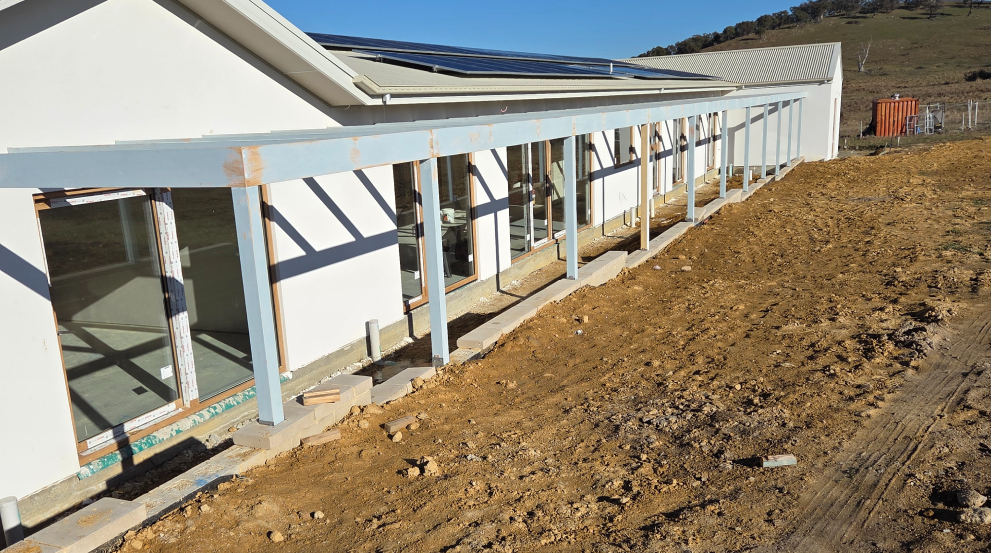The Australian Government has recently introduced the Cheaper Home Batteries Program, a new national rebate on home batteries to work with rooftop solar systems. We spoke to Liz Greenbank from BOOM! Power – a Bank Australia partner that specialises in home electrification – about what this means, who is eligible and how you can get free support with deciding whether a battery is right for your household.
With the new financial year comes a significant development in Australia’s clean energy transition.
On July 1, the recently re-elected Labor government launched the Cheaper Home Batteries Program, assisting Australian households, businesses and community organisations to purchase batteries for new or existing rooftop solar systems. This new federal subsidy can reduce the upfront cost of a home battery by about 30%, with the average rebate expected to be around $4,000. On top of that, the battery itself can deliver ongoing savings by cutting down on peak-usage rates and ultimately reducing energy bills.
In Australia, where one in three homes already has rooftop solar, this move is designed to encourage people to self-consume the power their home generates. “The battery soaks up the solar that you can't use during the day, and then you can use it at night,” says Liz Greenbank from BOOM! Power, a Bank Australia partner that helps guide our customers to get off gas and transition to all-electric homes. “This is especially important as feed-in tariffs – the amount you get paid for putting energy back into the grid – have dropped to near zero in many areas.”
According to Liz, “Some of our installer partners are already seeing 50% of solar installs include batteries. That number is only going to go up now.”
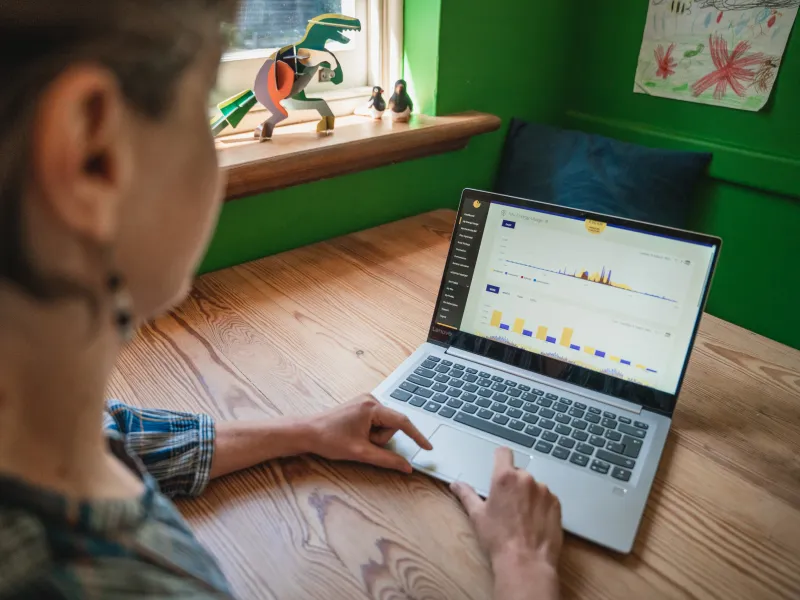
How does the rebate work and who is eligible?
To qualify for the new battery rebate, you must already have solar installed, or install solar and a battery together.
The subsidy applies across Australia and follows the same structure as the existing solar rebates using Small-scale Technology Certificates (STCs). “It means there is no application process for the consumer,” Liz says. “Your STCs are traded to your installation company, and the rebate comes off their final bill. Implementation will be quick, so installers can offer it straight away.”
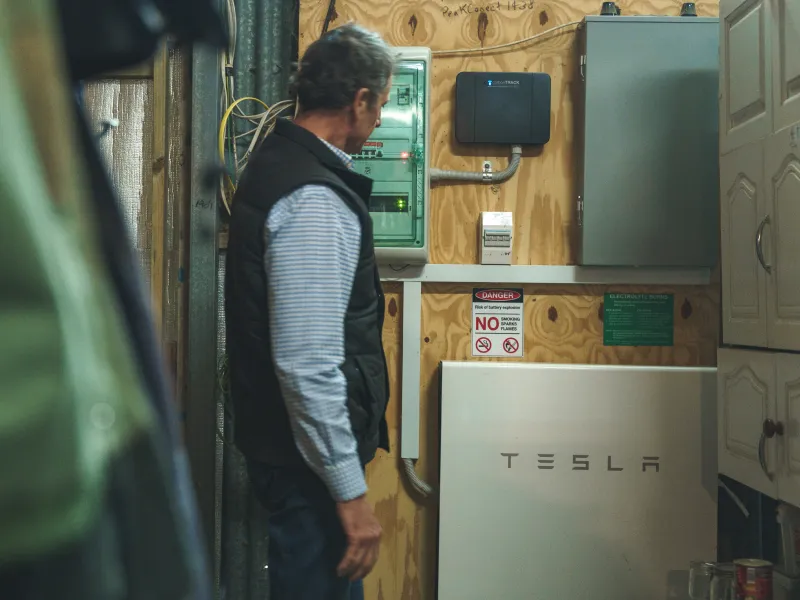
The benefits of installing a home battery
- Store solar energy to use at night or peak times
- Opportunity for significant cost savings
- Reduce strain on the energy grid
If you’re generating solar energy, a battery lets you use more of it yourself, reducing strain on the grid and also potentially insulating you from fluctuating energy prices.
In the evenings, when there’s a post-work spike in usage and solar panels don’t generate power, it’s more expensive to draw power from the grid. For many households, using a battery at this time can translate to significant savings. “The number one driver of home batteries is going to be energy savings,” Liz says. “If you’re drawing less energy from the grid, that can mean extra savings.”
On top of this, home battery uptake can relieve pressure on an ageing energy grid. “The grid was designed for power to flow one way – from a large power station to your house,” Liz says. “It wasn’t built for millions of homes exporting solar all at the same time. Batteries help fix this issue by letting people fill their batteries, rather than exporting it when everyone else is.”
And if you’re thinking longer term: “By 2027, Victoria will phase out new gas hot water systems, so we’re all heading toward all-electric homes,” Liz says.
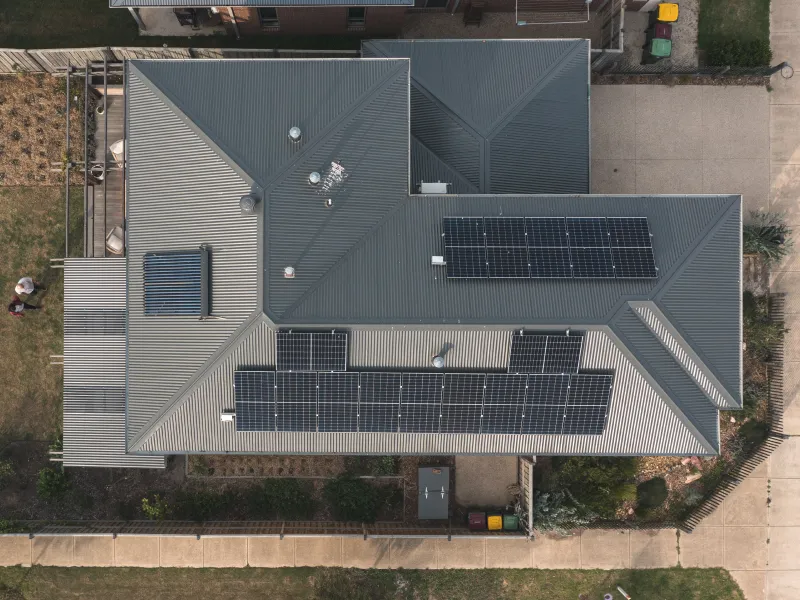
The challenges of installing a home battery
The biggest challenge to home battery installation remains the same, even with the rebate: the upfront cost, which generally runs into the thousands of dollars. Thankfully, there are financing options available to help with this, including Bank Australia’s personal loans or Eco Pause, which lets eligible customers take a break from mortgage repayments and redirect that money to green home upgrades like batteries.
Liz also highlights that batteries may not be the ideal first step for every household. “If you still have gas appliances – like heating or hot water – consider switching those to electric first,” Liz says. “That way, your solar can power them directly and reduce your gas bill.”

Battery basics: other things to know
- Batteries don’t always include default back-up: “People assume their battery will keep their whole house running in a blackout,” Liz says, “but backup is not always included and most can only back up certain circuits like the fridge and some lights.”
- VPP participation may affect your warranty: “Virtual Power Plant (VPP) offerings can look very attractive because there's additional savings, but check the fine print to make sure you understand how your battery will be used and when,” Liz advises.
- Your appliances matter: “To make the most of your solar and battery, it’s important to consider efficient electric appliances that don’t draw down too much energy.”
Trying to decide if a battery is right for your home?
Getting a battery can feel overwhelming, with countless installers and confusing pricing structures out there. That’s where BOOM! Power steps in. And it’s free for Bank Australia customers.
“Our easy to use tool walks you through the process,” Liz says. “You enter some basic info – your energy bills, your appliances – and we show you your potential savings, emissions reductions and upfront costs.”
From there, households are connected to trusted, vetted local installers with high customer satisfaction and ongoing support. “It’s not just about getting the best price,” Liz says. “You want that quality, long-term support.”
Bank Australia customers have free access to BOOM! Power’s Electrify Your Home tool, which provides assessment and guidance to help transition homes to be all-electric.
